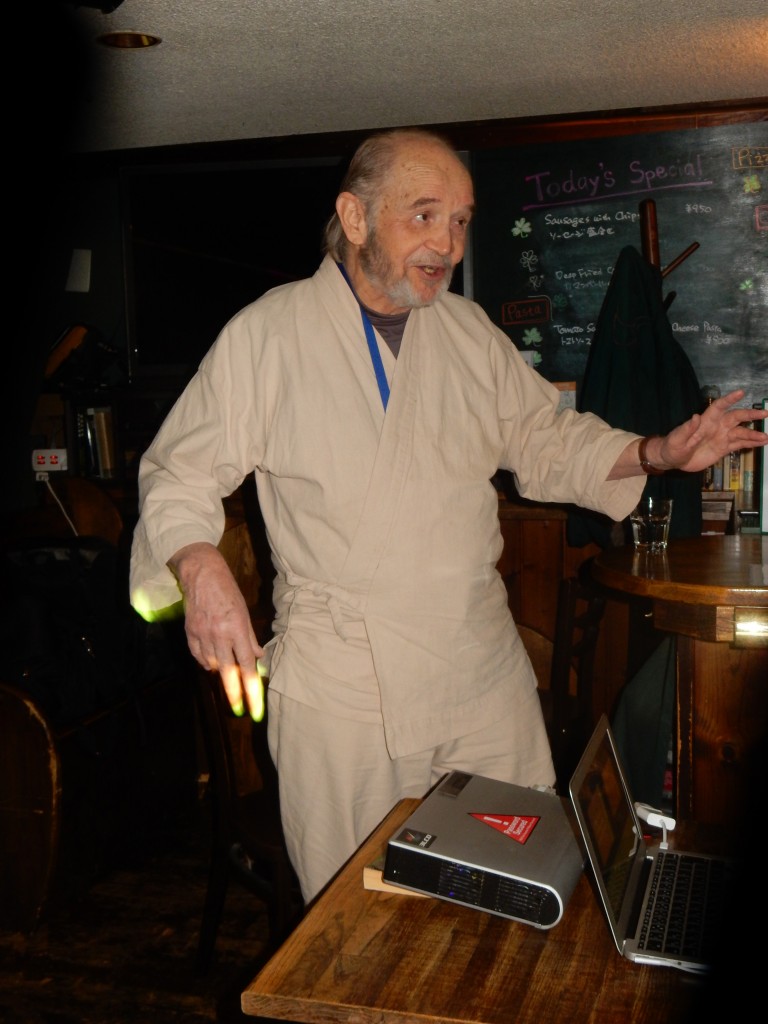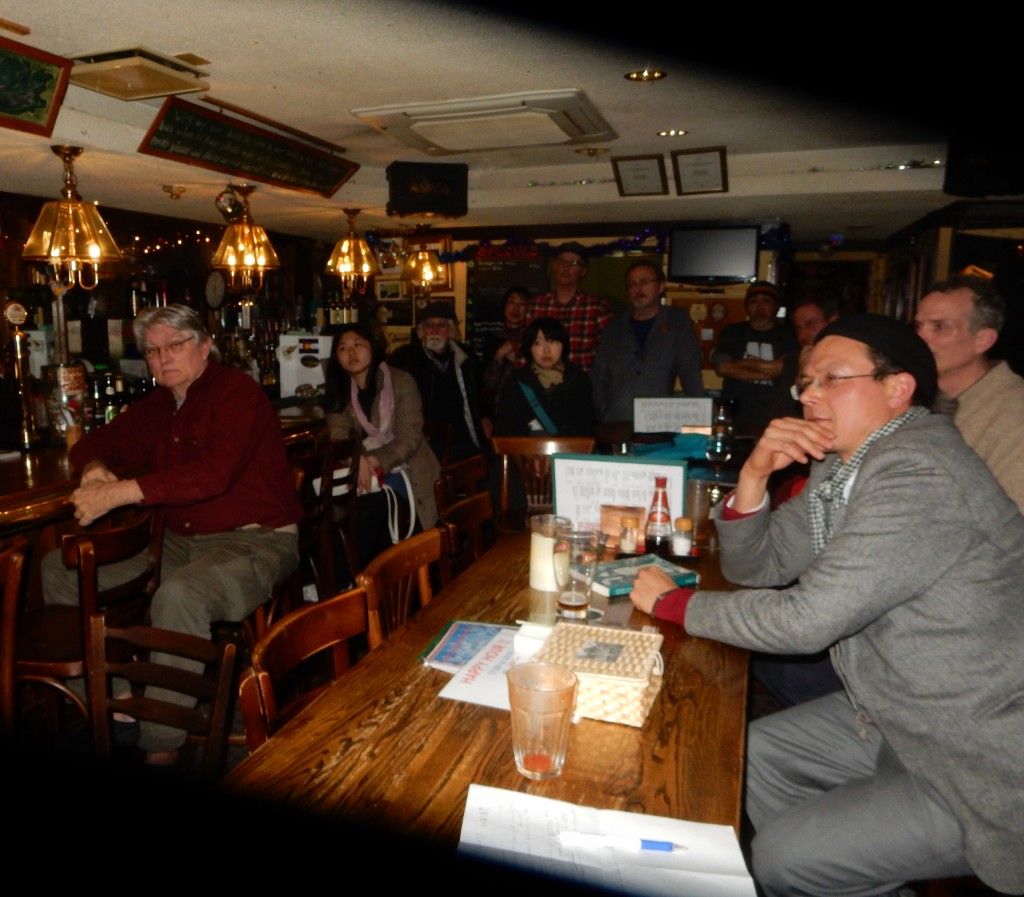
WiK’s February event featured Brian Daizen Victoria, a Soto Zen priest, talking about his current work on Zen and terrorism in the 1930s. Brian is widely known for his book on Zen at War, first published in 1997 with a new edition in 2006. It has its own Wikipedia page, and has been influential enough to have prompted apologies by senior Zen figures for the part played by their predecessors in promoting Japanese militarism in WW2.
Born in Nebraska, Brian first came to Japan in 1961 as a short-term missionary for the Methodist Church, teaching at Aoyama Gakuin University in Tokyo. He took this position in order to fulfill his “alternative service duty” as a conscientious objector to military service. Later, he became active in the anti-Vietnam war movement in Japan where he helped to counsel and organize US military personnel stationed at Yokosuka Naval Base opposed to the war. He obtained a MA from the Soto Zen Komazawa University, then a PhD from Temple University. He also trained as a priest at the Soto Zen head temple of Eihei-ji, which as anyone who has read Eat Sit Sleep will know ranks among the most severe types of training.
Brian has been a senior lecturer with Adelaide University in Australia, and with Antioch University in the US. Since 2013 he has been a fellow of the Buddhist Centre in Oxford and a research fellow with Nichibunken in Kyoto. He has written numerous books on topics related to Buddhism in the years around WW2. On this occasion he addressed the topic of Zen terrorism in the 1930s, notably the Blood Oath Corps Incident of 1932 (also known as The League of Blood Incident). What he had to say was eye-opening.
Consideration was given first to the uses of Zen mindfulness and its connection with the samurai. This went along with a quotation about D.T. Suzuki to the effect that Zen can be applied to anything intuitive. There was mention too of Nansen’s Cat, a shocking koan about a Zen master cleaving a cat in two apparently out of compassion. The conclusion seemed to be that mindfulness is a powerful tool that can be applied to virtually anything – as the events of 1932 showed.
Brian then outlined how a group of assassins were masterminded by a Zen trained layman named Inoue Nissho. His denomination is disputed, because he’s often described as a Nichiren follower though Brian insisted he was an independent under the influence of Zen. The conspiracy was intended to do away with 20 people supposedly leading the country in the wrong direction. In the event only two were killed (in the first wave) – both high ranking financiers.
At the trial that followed the assassinations, Inoue was defended by one of the most senior Zen figures in Japan – Yamamoto Gempei, a Rinzai Zen master at Ryutaku-ji founded by Hakuin. Brian had translated his testimony which he put up on a screen for us to consider. The argument rested on the nebulous notion of murder by a person with selfish motives being evil, whereas murder by someone with a pure mind was justifiable. Pure in this case meant without self-interest, i.e. for the good of the community rather than for one’s own benefit. Some of the thinking was ominous, some of it convoluted, and some blood-chilling.
Perfect wisdom is like a mirror that reflects humans, heaven, earth, and the universe. Inoue further realized that the true form of humans, heaven, earth and the universe is no different than the true form of the self. The manifestation of this truth of the universe is the Spirit of Japan, that is to say, the polity of Japan. It is in these things that Inoue’s spirit is to be found… It is true that if motivated by an evil mind, someone should kill so much as a single ant, as many as one hundred and thirty six hells await that person…. The Buddha, being absolute, has stated that when there are those who destroy social harmony and injure the polity of the state, then even if they are called good men killing them is not a crime.
The justification for murder here rests, ironically, on the nature of self-sacrifice and acting for the good of others. In this case the assassinations were intended to benefit the Japanese as a nation and allegedly committed out of compassion for them. But surely, one might well think, the actions were totally outside Buddhist morality and the Eightfold Path? It was a question Brian had obviously thought deeply about and on which he had a lot to say… but with time running out, it was decided to keep it for another day (possibly with the showing of a Dutch documentary of Zen and War about European and Japanese reactions to the book).
For the moment Brian’s conclusion seemed to be that the involvement of religion with the state led to unfortunate results. Religion can be an enabling mechanism (but not a cause) of terrorism – as seen currently in the Middle East, for instance. In Japan’s case there had been an overreaction to the Meiji Restoration adoption of Shinto as a state religion, when Buddhism was attacked in the haibutsu kishaku movement (abolish Buddhism and destroy Shakyamuni). To overcome the suspicion of a ‘foreign religion’, some Japanese Buddhists had adopted a superpatriotic way of thinking that spilled over into fanaticism and violence.
***************************
For Brian’s latest article on a visit by the Hitler Jugend to Eihei-ji in 1940, together with his thoughts on the ramifications, please click here.

